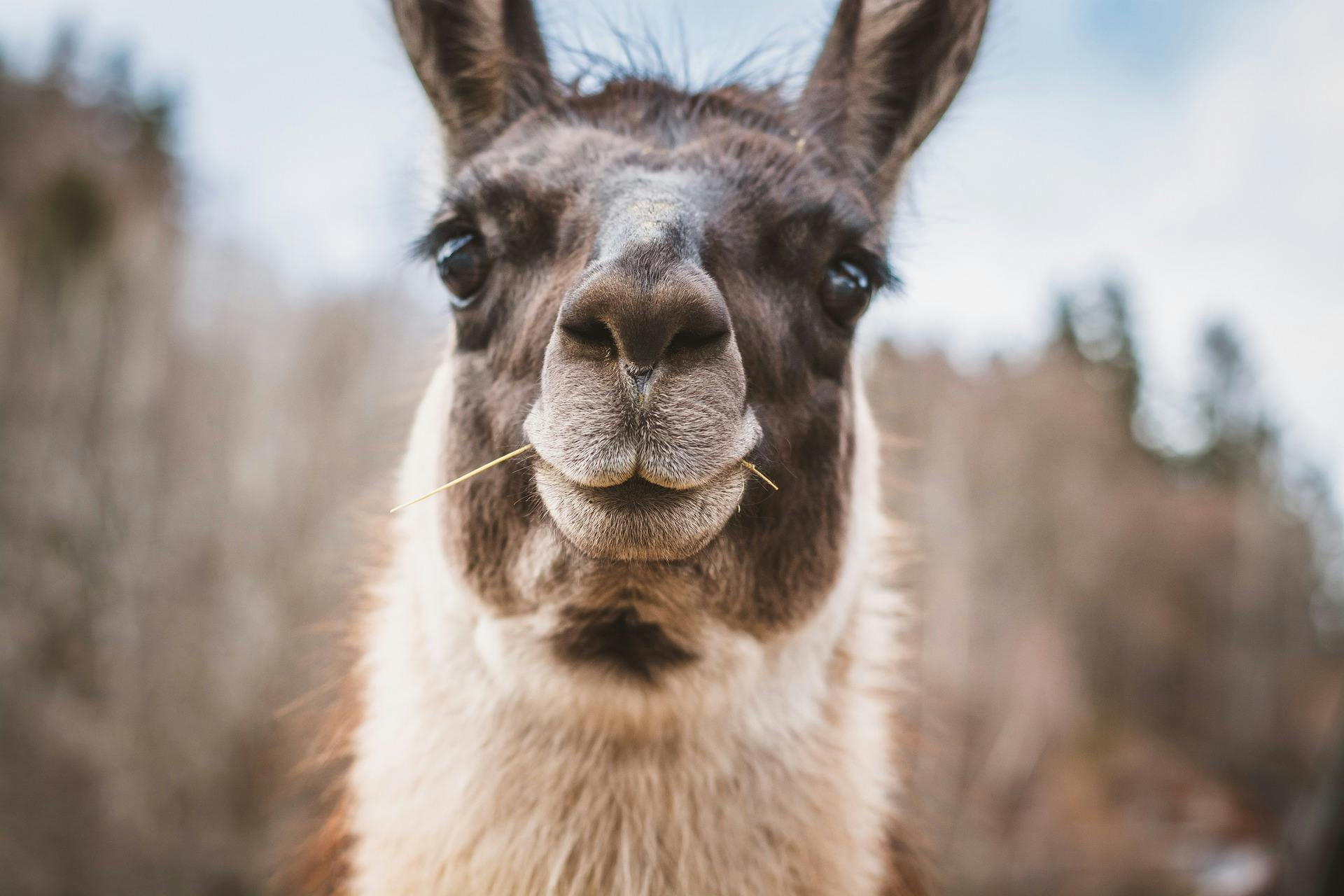llama vs alpaca
What is the difference?
llama vs alpaca
Want to know the key differences between llamas and alpacas? Look no further. Here we will explain the differences, give you reference llama and alpaca images, and some factoids about alpacas Vs llamas along the way. Never confuse these two South American camelid species again!
1. llama
noun
Llamas are native to the Andes Mountains in South America, where the quality of pasture and harsh environment is perfect for their herbivore diets. The most famous resident of the Machu Picchu Incan citadel is the hardy animal, the llama. Though they used derived from wild species, llamas are now domesticated animals, and the average llama is around 5-6 feet tall.

Fun Factoids
Llamas are extremely intelligent animals that were first domesticated and used as pack animals by the Incas in the Andean highlands around 4,000 to 5,000 years ago. Their wild counterpart, the guanaco, is closely related, and baby llama fibers are still considered one of the best natural fibers worldwide. Though llamas have a bad reputation, did you know that they rarely bite? Instead, they spit, kick, or refuse to move when agitated or overloaded. However, this rarely happens and mostly toward each other. They are also great guard animals.
Examples for llama
Llamas are easy to train, strong, and considered very intelligent.
You can tell if a llama is agitated by their body language. It will lay its ears back and make a warning bray.
A llama's natural habitat is high above the ground in South America. They are adapted to shrubs, unsteady ground, and small rocks because of their soft llama pads.
Since their pads are softer than hooves, they affect less damage to the environment.
Llama poo doesn't smell very much! Llama manure is called "llama beans" and makes a fantastic, eco-friendly fertilizer.
Llamas are herd animals; they prefer company. The social structure of llama herds can frequently change, as male llamas can move up the chain by picking and winning small fights with the leader.
2. alpaca
noun
What is an alpaca to llama? Well, despite being confused, alpacas are significantly smaller than llamas. An adult alpaca's average height is around 2.5 to 3.5 feet tall. Baby alpacas are called "Crias" and are reared for their impressive alpaca hair and alpaca meat. Alpaca fiber is naturally hypoallergenic and similar to sheep wool but less itchy. Like llamas, alpaca herds live in family groups and have shorter pointer ears.

Fun Factoids
Did you know the ancestors of alpacas and llamas are said to have originated in North America around 40 million years ago? The camelid species then emigrated to South America during the Great American Interchange, and the Incas subsequently domesticated alpacas around 6,000 years ago for their alpaca wool and soft fiber. Domestic alpacas are now used around the world as therapy animals, especially for kids and adults on the autism spectrum, as they are generally calm and docile animals. There are also alpaca therapy programs in nursing homes worldwide.
Examples for alpaca
Alpaca faces are shorter and more rounded than llamas.
Female alpacas are called "hembra."
Alpaca hair is expensive as it can only be shorn once a year.
Alpacas are a part of the South American camelids family. As are llamas, guancaos, and vicuñas. However, only llamas and alpacas are domesticated animals. The others are their wild counterparts.
The average body weight of an adult alpaca is 100 to 185 pounds.
Alpaca meat is mild, tender, and very lean. It has high protein and low fat making it a healthy choice.
Takeaways - Tips
Llama
Llamas are generally taller than alpacas and less furry! They are also heavier; their average body weight is around 280 to 450 pounds.
Alpacas
On average, alpacas are the furrier of the two. They are much smaller than llamas and weigh much less.
Bottom Line
Both animals are domesticated, and their natural habitats are very similar. Llamas are found in Peru, whereas alpacas are more commonly found in Bolivia, but both are common species in South America. Both mammals have been reared for over 4,000 years and are ancestors of the Camelidae family. However, the alpaca was bred for its soft alpaca wool and llamas more for their meat and strength.
FAQs
When to use llama?
When to use alpaca?
How to remember Llama vs. Alpaca?
Commonly Confusing Words
Spell checkers don't always have you covered. Sometimes your word might be spelled correctly, but it could be the wrong word. In English, there are lots of confusing terms that look alike but are spelled differently, and many terms that mean the same thing but are easily misused.
Here are the most commonly confusing word pairings, with definitions and examples of their usage.